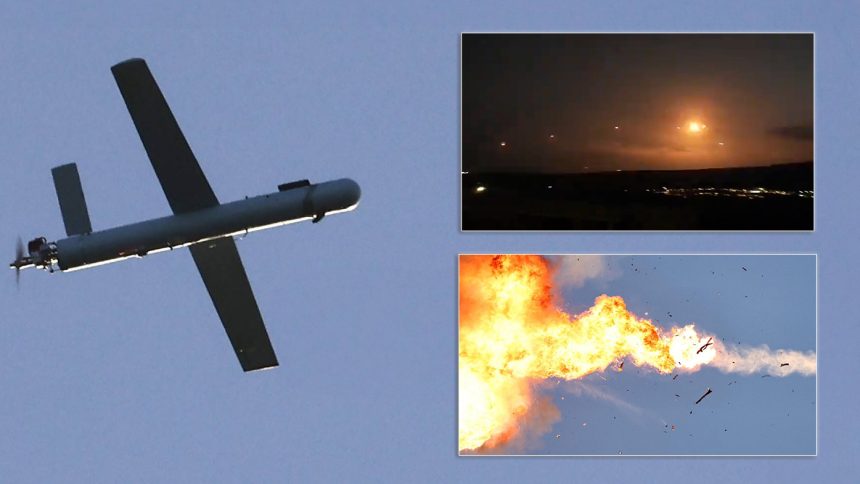Hezbollah was ready to launch as many as 6,000 missiles to Israel. While the attack plan was foiled, additional attack from other country, likely Yemen, is expected in coming days.
Late in the night between Saturday and Sunday, August 25, 2024, Israeli forces executed a preemptive air strike against multiple missile launch sites in Lebanon. According to Israeli intelligence and confirmed by Hezbollah, the militant group had been preparing to launch a large-scale attack. The operation was allegedly set to begin at 5AM LT and would have involved the launch of up to 6,000 missiles aimed at northern Israel, with additional drone strikes targeting central Israel.
The preemptive strike was involved 100 Israeli Air Force aircraft that hit 40 launch sites.
כ-100 מטוסי קרב של חיל-האוויר, בהכוונת פיקוד הצפון ואגף המודיעין, תקפו והשמידו אלפי קני שיגור של ארגון הטרור חיזבאללה שמוקמו והוטמנו במרחב דרום לבנון. רובם כוונו לעבר הצפון וחלקם לעבר מרכז הארץ.
כמו כן, הותקפו למעלה מ 40 מרחבי שיגור. pic.twitter.com/VjcIibEu1O
— Israeli Air Force (@IAFsite) August 25, 2024
Despite the preemptive strike, Hezbollah still managed to fire 210 rockets and around 20 drones at northern Israel during the early morning. The majority were intercepted by Israel’s defense systems, and the rest landed in uninhabited areas, causing no casualties.
Hezbollah says it has begun its response to the killing of the terror group’s military commander Fuad Shukr in an IDF strike last month.
In a statement, Hezbollah says it launched several explosive drones at Israel, targeting military sites.
Al Arabiya reports that more than…
— Emanuel (Mannie) Fabian (@manniefabian) August 25, 2024
Images of successful Iron Dome intercepts were circulated on social media.
⚡️⭕️ About 100 rockets and a few drones have been launched so far from #Lebanon pic.twitter.com/C6yDv2KMxC
— Middle East Observer (@ME_Observer_) August 25, 2024
Footage from the Western Galilee shows the Iron Dome engaging a Hezbollah rocket attack from Lebanon. pic.twitter.com/AKgd9horSm
— Emanuel (Mannie) Fabian (@manniefabian) August 25, 2024
Hezbollah’s attack is in retaliation for Israel’s assassination of its military commander Fuad Shukr during a raid in Beirut on July 30. The strikes also followed the killing of Hamas leader Ismail Haniyeh in Tehran, which was widely attributed to Israel.
Breaking: Hezbollah has released a statement saying its retaliation against Israel for the assassination of Hezbollah leader Fuad Shukr in July has begun.
— Jim Sciutto (@jimsciutto) August 25, 2024
Hezbollah declared that it had successfully completed the “first phase” of its assault on Israel, while Hamas expressed satisfaction with the outcome, labeling it as a significant blow to Israel. However, according to Israeli officials, their countermeasures largely thwarted Hezbollah’s planned offensive. The primary focus of the attack was said to be the Gilot area near Tel Aviv, which is home to Mossad headquarters and Unit 8200, an elite intelligence unit.
There it is. New NOTAM for Ben Gurion Airport. The airport is closed. pic.twitter.com/0hB50sMuK2
— The Intel Crab (@IntelCrab) August 25, 2024
Despite the severity of the situation, Israel reopened Tel Aviv International Airport at 7 AM., signaling a return to relative normalcy. Throughout the morning, Israel continued to carry out air strikes aimed at eliminating further threats from Hezbollah.
בשעה האחרונה, חיל-האוויר תקף להסרת איומים משגרים של ארגון הטרור חיזבאללה במספר מרחבים בדרום לבנון.
כוחות אוגדה 91 זיהו חוליית מחבלים פועלים במרחב אל-חיאם שבדרום לבנון, ובסגירת מעגל מהירה כלי-טיס של חיל-האוויר תקף את המחבלים. pic.twitter.com/R6d1P7HxFW
— Israeli Air Force (@IAFsite) August 25, 2024
Israeli Prime Minister Benjamin Netanyahu warned that this was not “the end of the story”, stressing that Hezbollah’s leader Hassan Nasrallah and Iran’s Supreme Leader Ali Khamenei should understand that Israel is committed to securing its northern region and allowing displaced residents to return home.
“Hezbollah tried to attack the State of Israel with rockets and drones. We instructed the IDF to carry out a powerful, preemptive strike to eliminate the threat,” Netanyahu said.
“The IDF destroyed thousands of short-range rockets, and all of them were aimed at harming our citizens and our forces in the Galilee,” he added. “In addition, the IDF intercepted all the drones that Hezbollah launched at strategic targets in the center of the country.”
Tensions remain high
Despite both sides claim they do not want such an outcome, the possibility of a full-scale war between Israel and Hezbollah remains high.
Adding to the already volatile situation, reports from the BBC suggest that Yemen’s Houthi rebels, another Iranian-backed faction, might launch a new wave of attacks against Israel in the coming days. The Houthis have yet to retaliate for Israel’s July strike on the port of Hodeida, leaving another front of the conflict potentially open.
Meanwhile, the White House is closely monitoring the developments. U.S. President Joe Biden and his national security team have been in constant communication with Israeli counterparts, reaffirming America’s commitment to Israel’s right to self-defense while simultaneously pushing for peace talks in Gaza through ongoing negotiations in Cairo.









